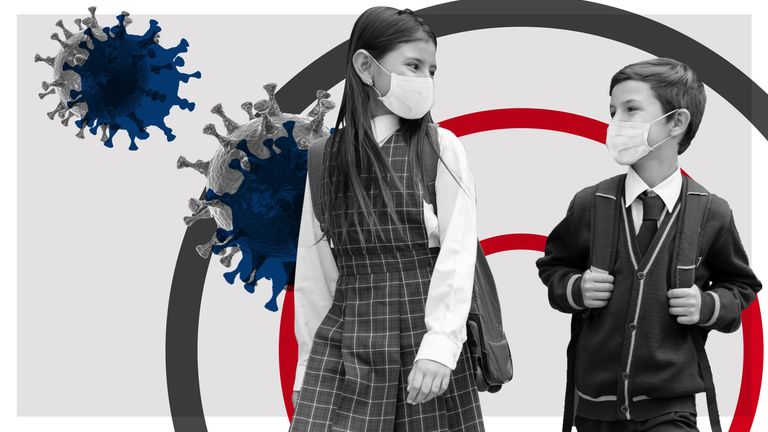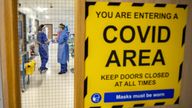COVID-19: How much are schoolchildren driving London's latest coronavirus spike?
Cases among 10 to 19-year-olds in London have recently increased at a faster rate than the rest of the capital's population.
Monday 14 December 2020 23:27, UK
Despite London moving into Tier 3 restrictions following a spike in COVID-19 cases among secondary pupils, the government is insisting that schools in the capital remain open ahead of the Christmas break.
Two of London's 32 boroughs, Greenwich and Islington, have told children to work from home from Tuesday and Wednesday respectively instead of remaining at school until the end of term on 18 December.
The government has ordered Greenwich to keep schools open and threatened the council with legal action if they do not obey.
Mayor of London Sadiq Khan has called on the government to consider closing schools and colleges early, but ministers are instead threatening to use legal measures to force those who do shut to stay open.
Ahead of London moving into Tier 3 on Wednesday, Sky News has looked at how case rates in the city have recently increased in children aged 10 to 19.
Increases in COVID-19 cases in 10 to 19-year-olds in London are much higher than in the rest of the city's population.
The rates vary across London boroughs, with Havering in east London nearly four times higher than Westminster in central London.
But the government has insisted it would treat London as one area after SAGE, the government's scientific advisory body, warned the virus will spread more easily if different boroughs have different rules because people move across boundaries. This is especially so in London.
London secondary pupils have seen a much larger increase in cases than other cities in England.
Manchester, which was placed in Tier 3 on 2 December, has seen cases drop in its secondary school pupils since November.
In Liverpool, which is in Tier 2, case rates in the same age group have also dropped since then.
Both areas were in the previous version of Tier 3, which was not as tough as the current incarnation, before the nationwide November lockdown began.
Some headteachers across the country are calling for schools to close early ahead of three households being able to form a Christmas bubble from 23-27 December, with no sign of those plans being altered.
Schools minister Nick Gibb said inset days at the end of term could be held to ensure a "clear six days" ahead of Christmas.
However, Dr Simon Clarke, associate professor of microbiology at the University of Reading, told Sky News this would not be enough time to stop the spread.
He said: "It only really works if the whole household quarantines for 10 days, so all pupils would have to be off from Tuesday to do that for Christmas Day at the earliest."
The microbiologist said there is no evidence pre-school and primary school children are large transmitters of COVID-19, "but the problem comes with secondary school children, especially from age 13, 14".
Subscribe to the Daily podcast on Apple Podcasts, Google Podcasts, Spotify, Spreaker
He said scientists do not yet know why they become transmitters, but most are asymptomatic or have mild symptoms.
"There are more respiratory tract infections at this time of year - this happens every year, children cough and splutter, they're in close confines at school," he said.
"Even teenagers aren't great at social distancing and they're in each other's company all day, every day.
"Most cases are transmitted in the home, they have to be picked up elsewhere and schools are one of those places. If you have one kid with COVID-19, they'll be with 30 other kids who then go home.
"The virus needs a fresh victim to spread, so it will spread within their household as well, and then parents are going to work... so you can see how it spreads."




